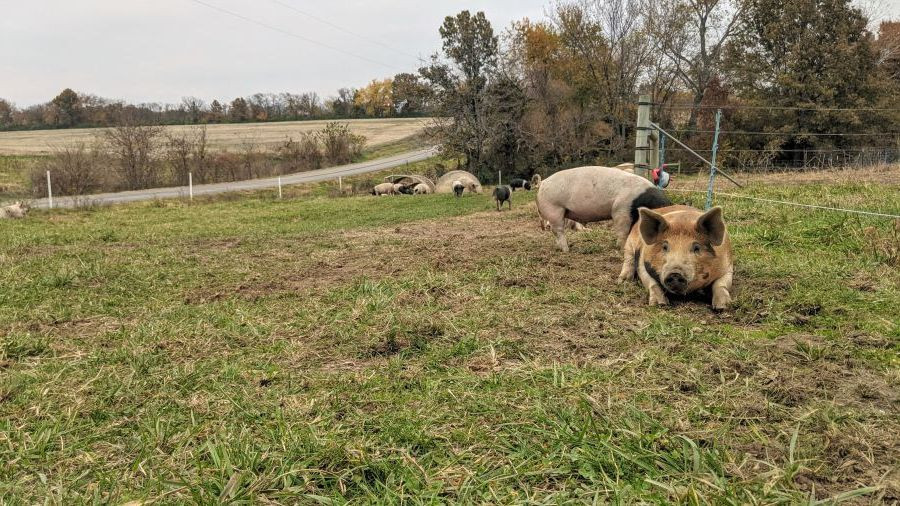Real vs Fake Pasture-Raised: Can You Spot the Difference?
posted on
February 8, 2024

My guess is that you've already figured out where I'm about to go with this. When you hear "Pasture-Raised" what do you picture in your mind? It may not be what you are getting.
I wanted to take a minute to bring to light some of the major discrepancies between truly pasture-raised operations and those who are using it as a marketing tactic to pad their bottom line.
The photo above shows two different farms, both in Missouri. The farm on the left is a grower for a leading "Pasture-Raised" egg brand. The farm on the right belongs to - you guessed it - yours truly. Notice any differences between the two?
The Differences Between David's Pasture and Leading Brands
The USDA (the United States Department of Agriculture) currently defines Pasture-Raised as being synonymous with Free-Range, and Free-Range is defined as "having access to the outdoors." This definition allows farms to raise hens indoors until they begin laying eggs (approx 4 months), then continue raising them by the tens of thousands in large stationary barns with a small door by which they can access a dirt lot with no forage and label the eggs (or meat) as Pasture-Raised. But is this what you pictured when you saw Pasture-Raised on the label? That is exactly what's happening in the picture on the left.
Raised On Pasture
All poultry at David's Pasture - both meat and egg production - are raised on pasture. This is much different than being given "access to the outdoors", which does not require them to be on any forage whatsoever. In the photo above, you can see that the lot around the large barn is almost completely void of vegetation. And while the satellite image shows pasture paddocks around the barn, chickens raised primarily indoors don't like to travel. That's why our chickens are raised on pasture and moved regularly in portable housing as seen above, ensuring that they explore and get more bugs and forage in their diets. This also eliminates the health issues caused by raising thousands of chickens in barns.
Transparent Policies
The photo of the poultry house above was found by a fellow small farm after much digging, but I don't have the address. And when searching for farms producing for companies like Vital Farms, I came up empty. I ended up going to Google Maps and dragging until I stumbled upon a bunch of houses near Springfield, MO. Trying to find these farms is like looking for a needle in a haystack. What are they trying to hide? If companies like Vital Farms are so proud of their practices, why don't they advertise their farmers and offer tours?
At David's Pasture, we have nothing to hide because we believe in our practices and that we are doing right by our customers. We believe in holding each other accountable and love building relationships with you, which is why we host farm events where we give tours and explain the way we do things here. If you don't live within driving distance, I welcome you to check out our YouTube channel and social media for an inside look at our farm. You can also see the satellite imagery of the farm for yourself. This farm is about 2 miles from our main farm and office, which is located at 696 NE County Rd CC, in Concordia, MO.
Main Takeaway
Know your farmer, know your food. Today it's nearly impossible for us to purchase all of our food directly from the farm it was raised on, but it is still important that we find a source we can trust. Labels and pretty images are not inherently bad, but they can be deceiving.
This post is not meant to advocate for more regulation around marketing claims, although that is also worth discussing. My goal is simply to bring awareness to the deception that is taking place and offer a safer way to source your food.
At David's Pasture, you are buying directly from us - the families that produced your meats (and eggs)- and you are always welcome to visit. We are proud to provide you with a quality product from a source that you can trust.
Feel free to comment below with questions or reach me directly using our Contact page.
In good eating,



